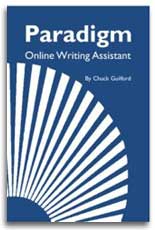Colons
The colon provides a formal introduction, especially to a series or to a quotation. Use it to bring your readers to a complete stop and focus their attention on what follows. Notice how colons work in the following examples:
Without colon: All campers should have a warm sweater, a swimming suit, toothbrush and toothpaste, and enough clothing to last for a week.
With colon: All campers should have the following items: a warm sweater, a swimming suit, toothbrush and toothpaste, and enough clothing to last a week.
Without colon: The law says, "Any person convicted of the possession of more than one ounce of this substance shall be sentenced to not less than ten nor more than twenty years in a state correctional institution."
With colon: The law reads as follows: "Any person convicted of the possession of more than one ounce of this substance shall be sentenced to not less than ten nor more than twenty years in a state correctional institution."
In both cases the wording has been changed slightly to emphasize the formal introduction and to bring the rhythm to a full stop. That's important. Don't give conflicting signals by letting the sentence rhythm suggest continuation and then inserting a colon, which suggests a complete stop.
Conflicting signals: Sarah participates in: tennis, golf, and gymnastics.
More consistent: Sarah participates in three sports: tennis, golf, and gymnastics.
Activity
4.25 Write five sentences that make use of the colon. When you have finished, rewrite the sentences without colons.




